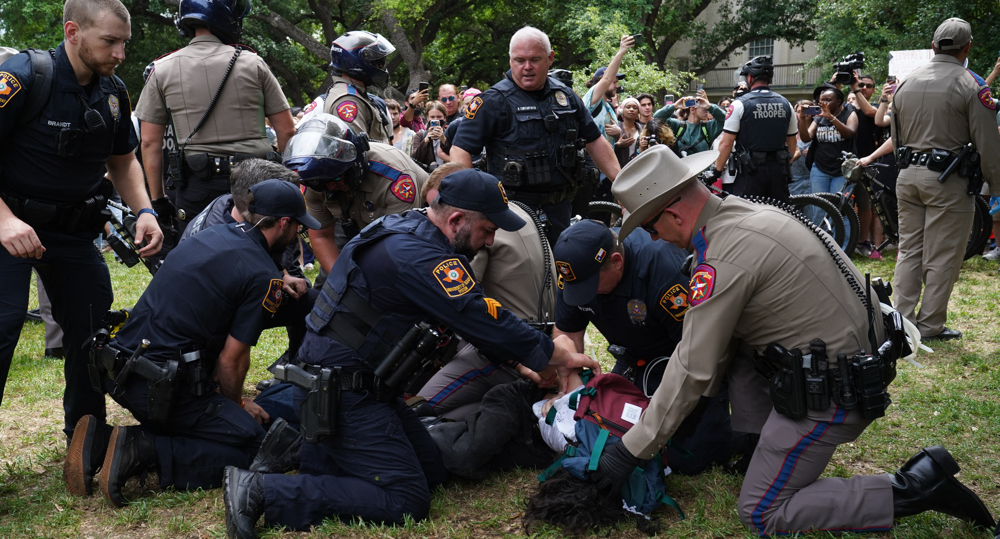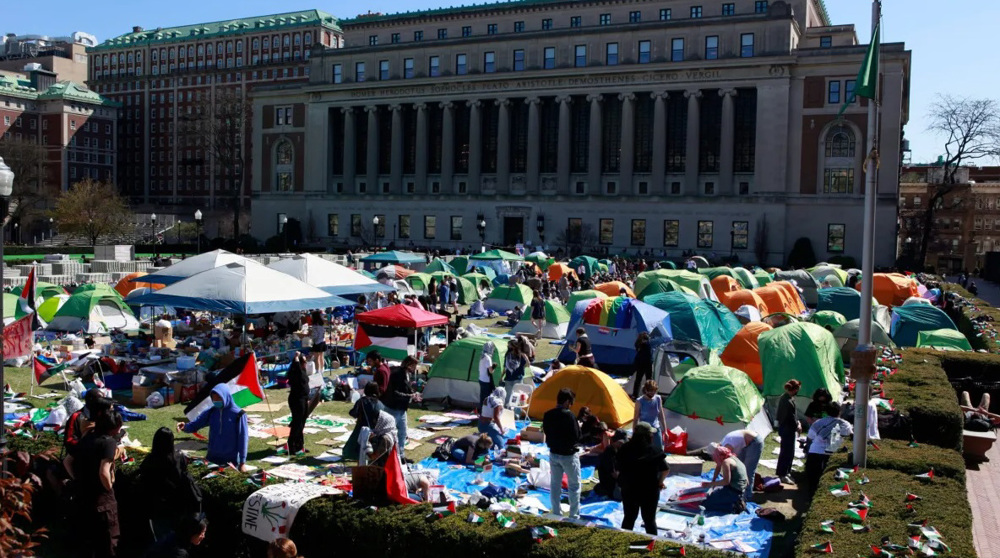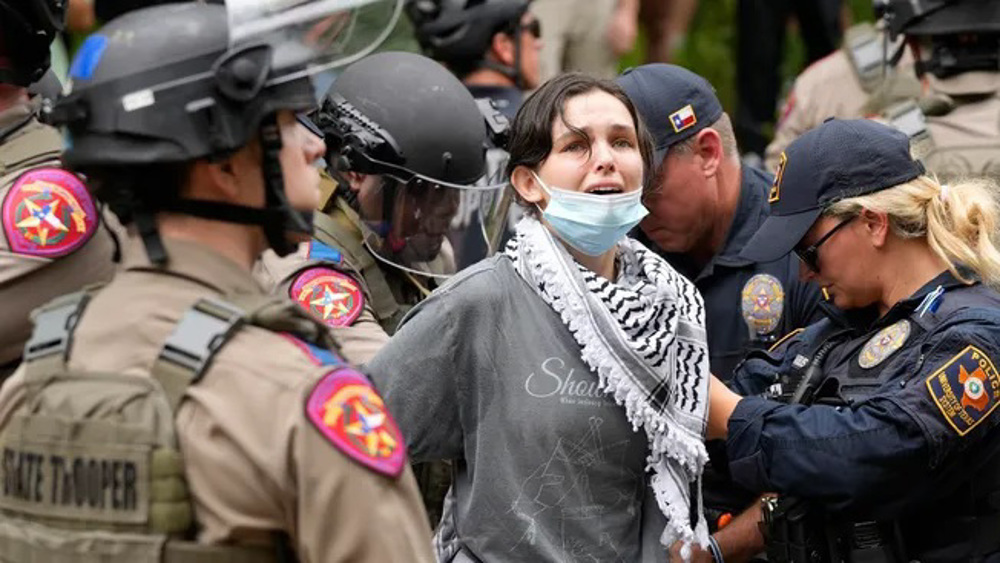Storm Harvey threatens Texas with 'catastrophic' floods, one dead
The most powerful storm to hit Texas in more than 50 years has killed at least one person and is now threatening catastrophic flooding as search and rescue teams deploy to the hardest-hit zones, authorities said on Saturday.
Harvey slammed into Texas, the heart of the US oil and gas industry, late Friday as a Category 4 hurricane with winds of 130 miles per hour (209 km per hour), making it the strongest storm to strike the state since 1961.
It ripped off roofs, snapped trees, and triggered tornadoes and flash floods, and cut power to nearly a quarter of a million people. It also curtailed a large portion of America's oil and fuel production, prompting price hikes at the pumps.
Harvey has since weakened to a tropical storm, but is expected to lash Texas for days as it lumbers inland, bringing as much as 40 inches (102 cm) of rain to some areas, and affecting heavily populated areas.
Houston could receive as much as 2 to 3 inches of rain per hour overnight, Mayor Sylvester Turner said late on Saturday. The National Hurricane Center described the rain forecast for the state as potentially "catastrophic."
"Rainfall measured in feet rather than inches can certainly create a catastrophic flood," spokesman Dennis Feltgen said.

One person died in a house fire in the town of Rockport, 30 miles (48 km) north of the city of Corpus Christi, as Harvey roared ashore overnight, Mayor Charles Wax said in a news conference on Saturday, marking the first confirmed fatality from the storm. Another dozen people in the area suffered injuries like broken bones, another official said.
The town took a direct hit from the storm and had streets flooded and strewn with power lines and debris on Saturday afternoon. At a recreational vehicle sales lot, a dozen vehicles were flipped over and one had been blown into the middle of the street. By Saturday evening, a convoy of military vehicles had arrived in the Rockport area with people and equipment to help in the recovery efforts, and town officials announced an overnight curfew for residents.
"It was terrible," resident Joel Valdez, 57, told Reuters. The storm ripped part of the roof from his trailer home at around 4 a.m., he said as he sat in a Jeep with windows smashed by the storm. "I could feel the whole house move."
Before the storm hit, Rockport's mayor told anyone staying behind to write their names on their arms for identification in case of death or injury. A high school, hotel, senior housing complex and other buildings suffered structural damage, according to emergency officials and local media. Some were being used as shelters.
Texas Governor Greg Abbott on Saturday said he was activating 1,800 members of the military to help with the statewide cleanup, while 1,000 people would conduct search-and-rescue operations.

The streets of Corpus Christi, which has around 320,000 residents, were deserted on Saturday, with billboards twisted and strong winds still blowing. City authorities asked residents to reduce use of toilets and faucets because power outages left waste water plants unable to treat sewage.
Elsewhere, the Texas Department of Criminal Justice said it was forced to evacuate some 4,500 inmates from three state prisons near the Brazos River because of rising water. Texas utility companies, meanwhile, said 220,000 customers were without power for an indefinite period of time.
The US Coast Guard said it had rescued 20 people from distressed vessels on Saturday, and was also monitoring two Carnival Corp cruise ships carrying thousands of people stranded in the US Gulf of Mexico due to the effects of the storm.
Harvey was a Category 4 hurricane on the Saffir-Simpson scale when it hit the coast, the second-highest category, and the most powerful storm in over a decade to come ashore anywhere in the mainland United States.
Heading inland, storm weakens

The storm weakened to Category 1 early on Saturday and was expected to be downgraded to a tropical storm later in the day, the US National Hurricane Center said. Harvey was about 150 miles (241 km) west-southwest of Houston, moving at about 2 mph (4 km/h), the center said in a morning update.
Harvey was expected to linger for days over Texas and bring as much as 40 inches (101.6 cm) of rain to some parts of the state.
The latest forecast storm track has Harvey looping back toward the Gulf of Mexico coast before meandering north again on Tuesday.
Nearly 10 inches (25 cm) of rain had already fallen in a few areas in southeastern Texas, the center said. Flash floods have already hit some areas, the National Weather Service said.
As many as 6 million people were believed to be in Harvey's path, as is the heart of America's oil-refining operations. The storm's impact on refineries has already pushed up gasoline prices. The US Environmental Protection Agency eased rules on gasoline specifications late on Friday to reduce shortages.
US President Donald Trump, facing the first big natural disaster of his term, said on Twitter he signed a disaster proclamation that "unleashes the full force of government help" shortly before Harvey made landfall.
"You are doing a great job - the world is watching," Trump said on Saturday in a tweet referring to the Federal Emergency Management Agency (FEMA), which coordinates the response to major disasters.
Utilities American Electric Power Company Inc and CenterPoint Energy Inc reported a combined total of around 237,000 customers without power.
While thousands fled the expected devastating flooding and destruction, many residents stayed put in imperiled towns and stocked up on food, fuel and sandbags.
Houston prepares for floods

As a Category 4 hurricane, Harvey is the first major hurricane of Category 3 or more to hit the mainland United States since Hurricane Wilma struck Florida in 2005.
Its size and strength also dredged up memories of Katrina, the 2005 hurricane that made a direct hit on New Orleans as a Category 3 storm, causing levees and flood walls to fail in dozens of places. About 1,800 died in the disaster made worse by a slow government emergency response.
Corpus Christi, a city of 320,000, was under voluntary evacuation for Harvey.
Texas and Louisiana declared states of disaster before the storm hit, authorizing the use of state resources to prepare.
The NHC's latest tracking model shows the storm sitting southwest of Houston for days, giving the nation's fourth most populous city a long dousing of rain and wind. Residents of Houston were woken with automatic flash flood warnings to their cell phones early Saturday.
The city warned residents of flooding from close to 20 inches (60 cm) of rain over several days.
Gasoline prices spike

US gasoline prices spiked as the storm shut down several refineries and 22 percent of Gulf of Mexico oil production, according to the US government. Many fuel stations ran out of gasoline before the storm hit.
More than 45 percent of the country's refining capacity is along the US Gulf Coast, and nearly a fifth of the nation's crude is produced offshore.
Ports from Corpus Christi to Texas City, Texas, were closed to incoming vessels and Royal Dutch Shell Plc, Anadarko Petroleum Corp, Exxon Mobil Corp and others have evacuated staff from offshore oil and gas platforms.
Disruptions to fuel supply drove benchmark gasoline prices to their highest level in four months.
The US government said it would make emergency stockpiles of crude available if needed to plug disruptions. It has regularly used them to dampen the impact of previous storms on energy supplies.
(Source: Reuters)
VIDEO | Press TV's news headlines
VIDEO | American, Israeli rabbis call for ceasefire during protest near Gaza
Iran calls for enhanced defense cooperation with Russia
US campus crackdown: 500 pro-Palestinian protesters arrested
VIDEO | Yemenis rally in Sana'a in solidarity with Palestinians in Gaza
VIDEO | Jordanians march after Friday prayers in support of Palestinians
Far-right Israeli minister Ben-Gvir injured
Germany clears pro-Gaza camp as US-style demos spread across Europe









 This makes it easy to access the Press TV website
This makes it easy to access the Press TV website